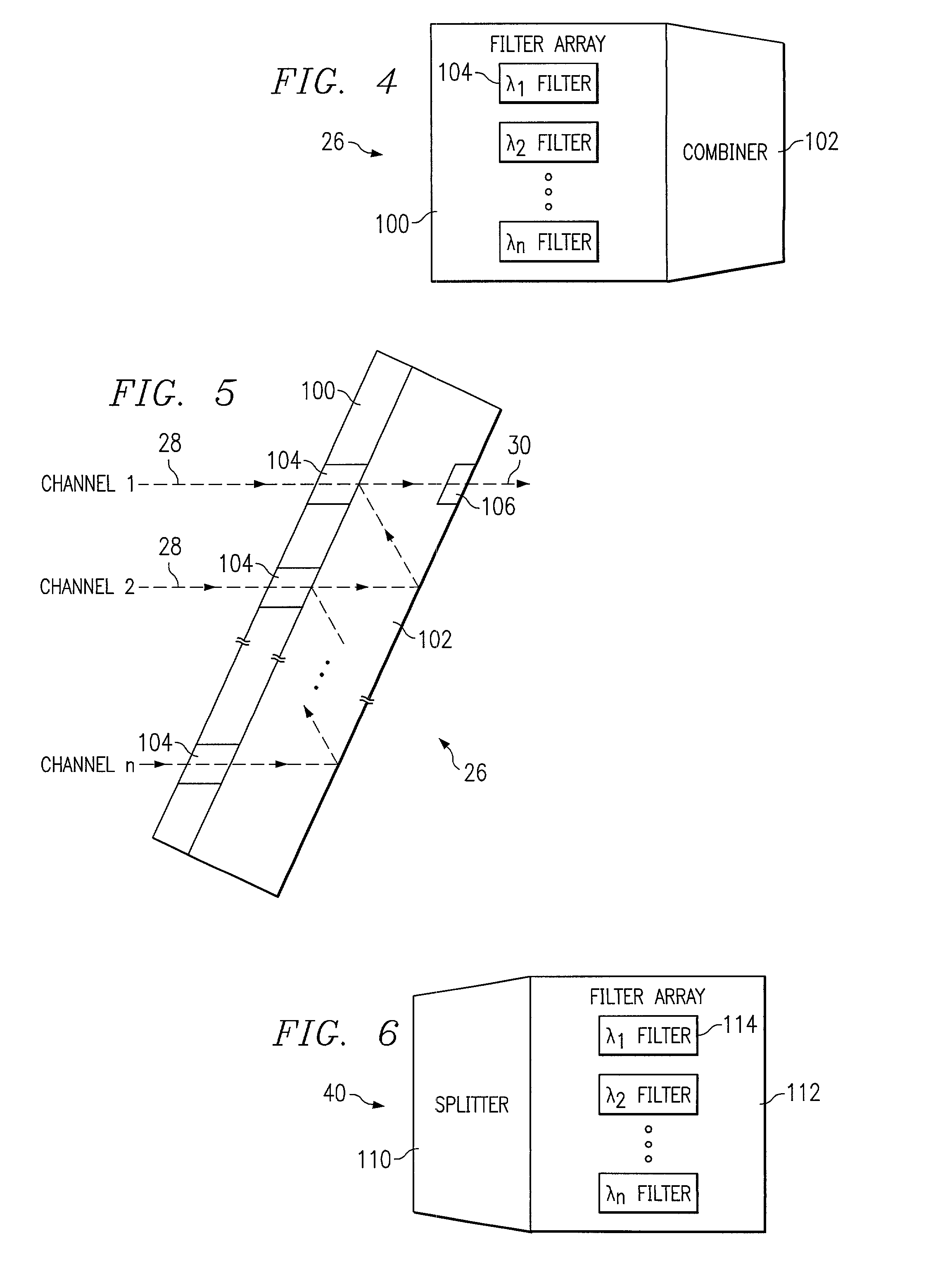Tunable channel spacing for wavelength division multiplexing (WDM) transport system
a transport system and wavelength division multiplexing technology, applied in the field of optical transport systems, can solve the problems of limiting the traffic that can be carried by the network, waste of unused channel capacity, etc., and achieve the effect of improving the optical transport system and maximizing the entire working bandwidth of the transport system
- Summary
- Abstract
- Description
- Claims
- Application Information
AI Technical Summary
Benefits of technology
Problems solved by technology
Method used
Image
Examples
Embodiment Construction
[0027]FIG. 1 illustrates an optical transport system 10 in accordance with one embodiment of the present invention. In this embodiment, the optical transport system 10 is a wavelength division multiplexing (WDM) system in which a number of optical channels are carried over a common path at disparate wavelengths. The WDM system 10 may comprise a dense WDM (DWDM) and other suitable multi-channel transport system. The optical transport system 10 may be used in a short-haul metropolitan network, a long-haul intercity network or any other suitable network or combination of networks.
[0028]Referring to FIG. 1, the WDM system 10 includes a WDM transmitter 12 at a source end point and a WDM receiver 14 at a destination end point coupled together by an optical link 16. The WDM transmitter 12 transmits data in a plurality of optical signals, or channels, over the optical link 16 to the remotely located WDM receiver 14. As described in more detail below, the spectrum width, or spacing, of the c...
PUM
 Login to View More
Login to View More Abstract
Description
Claims
Application Information
 Login to View More
Login to View More - R&D
- Intellectual Property
- Life Sciences
- Materials
- Tech Scout
- Unparalleled Data Quality
- Higher Quality Content
- 60% Fewer Hallucinations
Browse by: Latest US Patents, China's latest patents, Technical Efficacy Thesaurus, Application Domain, Technology Topic, Popular Technical Reports.
© 2025 PatSnap. All rights reserved.Legal|Privacy policy|Modern Slavery Act Transparency Statement|Sitemap|About US| Contact US: help@patsnap.com



